-
History & Society
- Education in Pre-war Hong Kong
- History of Taikoo Sugar Refinery
- Hong Kong Products Exhibition
- Local Festivals Around the Year
- Post-war Industries
- Pre-war Industry
- The Hong Kong Jockey Club Archives
- Tin Hau Festival
- Memories We Share: Hong Kong in the 1960s and 1970s
- History in Miniature: The 150th Anniversary of Stamp Issuance in Hong Kong
- A Partnership with the People: KAAA and Post-war Agricultural Hong Kong
- The Oral Legacies (I) - Intangible Cultural Heritage of Hong Kong
- Hong Kong Currency
- Hong Kong, Benevolent City: Tung Wah and the Growth of Chinese Communities
- The Oral Legacies Series II: the Representative List of the Intangible Cultural Heritage of Hong Kong
- Braving the Storm: Hong Kong under Japanese Occupation
- A Century of Fashion: Hong Kong Cheongsam Story
Geography & EnvironmentArt & Culture- Calendar Posters of Kwan Wai-nung
- Festival of Hong Kong
- Ho Sau: Poetic Photography of Daily Life
- Hong Kong Cemetery
- Sketches by Kong Kai-ming
- The Culture of Bamboo Scaffolding
- The Legend of Silk and Wood: A Hong Kong Qin Story
- Journeys of Leung Ping Kwan
- From Soya Bean Milk To Pu'er Tea
- Applauding Hong Kong Pop Legend: Roman Tam
- 他 FASHION 傳奇 EDDIE LAU 她 IMAGE 百變 劉培基
- A Eulogy of Hong Kong Landscape in Painting: The Art of Huang Bore
- Imprint of the Heart: Artistic Journey of Huang Xinbo
- Porcelain and Painting
- A Voice for the Ages, a Master of his Art – A Tribute to Lam Kar Sing
- Memories of Renowned Lyricist: Richard Lam Chun Keung's Manuscripts
- Seal Carving in Lingnan
- Literary Giant - Jin Yong and Louis Cha
Communication & Media- Hong Kong Historical Postcards
- Shaw Brothers’ Movies
- Transcending Space and Time – Early Cinematic Experience of Hong Kong
- Remembrance of the Avant-Garde: Archival Camera Collection
- Down Memory Lane: Movie Theatres of the Olden Days
- 90 Years of Public Service Broadcasting in Hong Kong
- Multifarious Arrays of Weaponry in Hong Kong Cinema
-
History & SocietyGeography & EnvironmentArt & Culture
-
View Oral History RecordsFeatured StoriesAbout Hong Kong Voices
-
Hong Kong Memory
- Collection
- All Items
- Teacher-student Tutelage
Recently VisitedTeacher-student Tutelage
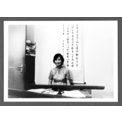
- Tsar Teh-yun in her qin chamber
"Yinyin" means tranquil and peaceful. The scroll hanging behind Tsar Teh-yun (1905-2007) in this picture is the calligraphy of Yinyinshi Ming (The Commemorative Description of Yinyinshi), written by Tsar Teh-yun. This photo was taken in the 1970s.
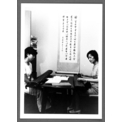
- A qin tutorial at "Yinyinshi" - demonstration
During a tutorial session, Tsar Teh-yun (right) would place two qins in her room: one for herself and the other for her student. To teach a new piece, she would first demonstrate the complete piece and then explain each section in detail before allowing her student to attempt to play the piece. She would patiently and sincerely demonstrate many passages over and over again if the student was unable to follow. The criticising approach to instruction never existed in her tutelage. This photo was taken in the 1970s.
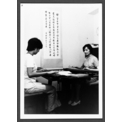
- A qin tutorial at 'Yinyinshi' - duitan (playing together with the teacher)
Further teaching was achieved through duitan, a traditional teaching practice in which the student played together with the teacher. Such practice was deemed necessary because the beat, volume, and fingering techniques of qin melodies cannot be fully recorded in or reproduced from qin tablature alone. By playing together with the teacher, a student finds it easier to observe and comprehend the unspoken details of a qin piece. This photo was taken in the 1970s and the student (left) in the photo is Lau Chor-wah.
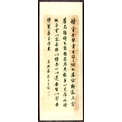
- Yinyinshi Ming (The Commemorative Description of Yinyinshi) by Tsar Teh-yun
Tsar Teh-yun named her qin chamber “Yinyinshi” and wrote the commemorative description, “In this cosy study, I contain myself; I preserve my mind into qin, which I enjoy as a pastime for my life and is dear to my heart.” “Yinyin” means tranquil and peaceful. Ji Kang wrote the line “yinyin is a virtue of the qin” in his piece Qin Fu (Rhapsody on the Qin). Tsar Teh-yun’s students founded the qin study group the “Deyin Qin Society”.
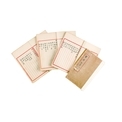
- Yinyinshi Qinpu (Yinyinshi Manuscript) - manuscripts (1)
Yinyinshi Qinpu is a collection of scores hand-copied by Tsar Teh-yun for her own use and teaching. They were transcribed in the late 1960s. The coloured modifications and notes on the tablature show that traditional qin musicians’ insights into the studies of the qin as they played it. Yinyinshi Qinpu was printed by the Department of Music, The University of Hong Kong in 2000. The original coloured notes were preserved in the printed copies.
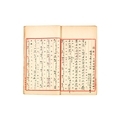
- Yinyinshi Qinpu (Yinyinshi Manuscript) - manuscripts (2)
The Yinyinshi Qinpu made use of traditional notations, and was written with a Chinese brush. The text is aligned vertically and is read from right to left. The inherited late Qing practice of marking the pitch and the rhythm next to the tablature is also apparent. The pitch is marked by gongchepu (the traditional gongche solfège notation) or the numbered musical notation in the margins, while the rhythm is marked by either dotted beats or the numbered musical notation. This picture shows the notation for the piece Yi Guren (Thinking of Old Friends).
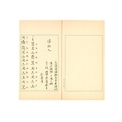
- Scores copied by students (1)
Tsar Teh-yun used Yinyinshi Qinpu for her teaching. After each lesson, the student would copy a section of the piece for home practice. The process of transcription and note taking helps students understand and memorise qin melodies. This score of Yi Guren (Thinking of Old Friends) was transcribed by Tsar Teh-yun’s student Cheung Lai-chun.
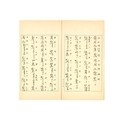
- Scores copied by students (2)
Tsar Teh-yun used Yinyinshi Qinpu for her teaching. After each lesson, the student would copy a section of the piece for home practice. The process of transcription and note taking helps students understand and memorise qin melodies. This score of Yi Guren (Thinking of Old Friends) was transcribed by Tsar Teh-yun’s student Cheung Lai-chun.
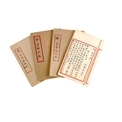
- Yinyinshi Shici Wengao (Shi and Ci Poetry from the Yinyinshi) - manuscripts
Yinyinshi Shici Wengao (Shi and Ci Poetry from the Yinyinshi) comprises the collected works of Tsar Teh-yun, composed in Shanghai and Hong Kong. The work, being written in Chinese brush and made up of shi-poems, ci-poems, and prose, was intended for pastime. These were printed by the Department of Chinese Language and Literature of Hong Kong Baptist University in 2003, after students had repeatedly pressed for Tsar Teh-yun’s agreement to do so.
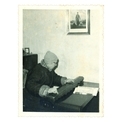
- Shen Caonong - Tsar Teh-yun's teacher
Shen Caonong (1891-1973), was a qin player from Xiaoshan, Zhejiang Province. He lived in Hong Kong in 1941, during which time he taught the art of qin to Tsar Teh-yun. As Tsar Teh-yun recalled, when she studied qin with Shen Caonong, the study of each piece would begin with demonstration and duitan (playing together with the teacher). The score would only be provided after she had familiarised herself with the piece.
Copyright © 2012 Hong Kong Memory. All rights reserved.
| Set Name |





